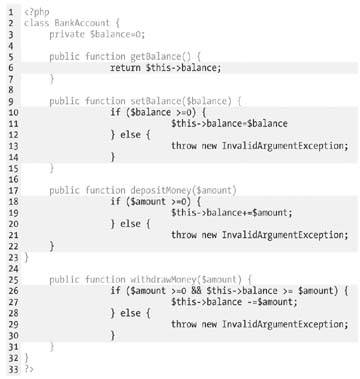Chapter 11. Stubs
Tests that only test one thing are more informative than tests in which failure can come from many sources. How can you isolate your tests from external influences? Simply put, by replacing the expensive, messy, unreliable, slow, complicated resources with stubs made from plain PHP objects. For example, you can implement what is in reality a complicated computation by returning a constant, at least for the purposes of a single test.
Stubs solve the problem of allocating expensive external resources. For example, sharing a resource, such as a database connection, between tests by using the PHPUnit2_ Extensions_TestSetup decorator helps, but not using the database for the purposes of the tests at all is even better.
 | Figure 1-2. The BankAccount class is completely covered by tests |
|
Design improvement is one effect of using stubs. Widely used resources are accessed through a single façade, so you can easily replace the resource with the stub. For example, instead of having direct database calls scattered throughout the code, you have a single Database objectan implementor of the IDatabase interface. Then, you can create a stub implementation of IDatabase and use it for your tests. You can even create an option for running the tests with the stub database or the real database, so you can use your tests for both local testing during development and integration testing with the real database.
Functionality that needs to be stubbed out tends to cluster in the same object, improving cohesion. By presenting the functionality with a single, coherent interface, you reduce the coupling with the rest of the system.
|